A Comprehensive Report: Canada's Oil Industry Trade Deficit
VerifiedAdded on 2022/09/29
|12
|2794
|25
Report
AI Summary
This report examines the trade deficit in Canada's oil and gas industry. It explores the relationship between international trade, trade deficits, and the Canadian economy, focusing on crude oil exports and imports. The report analyzes the impact of fluctuating oil prices, import costs, and export volumes on Canada's trade balance. It presents data from 2000 to 2021, including figures on crude oil exports and imports, and discusses the positive and negative effects of trade deficits on the country's growth. The study also highlights limitations in the research and suggests areas for future investigation, emphasizing the need for improved data clarity and access. The report concludes that imbalances in trade, particularly within the oil and gas sector, significantly affect the Canadian economy and its international trade relationships.
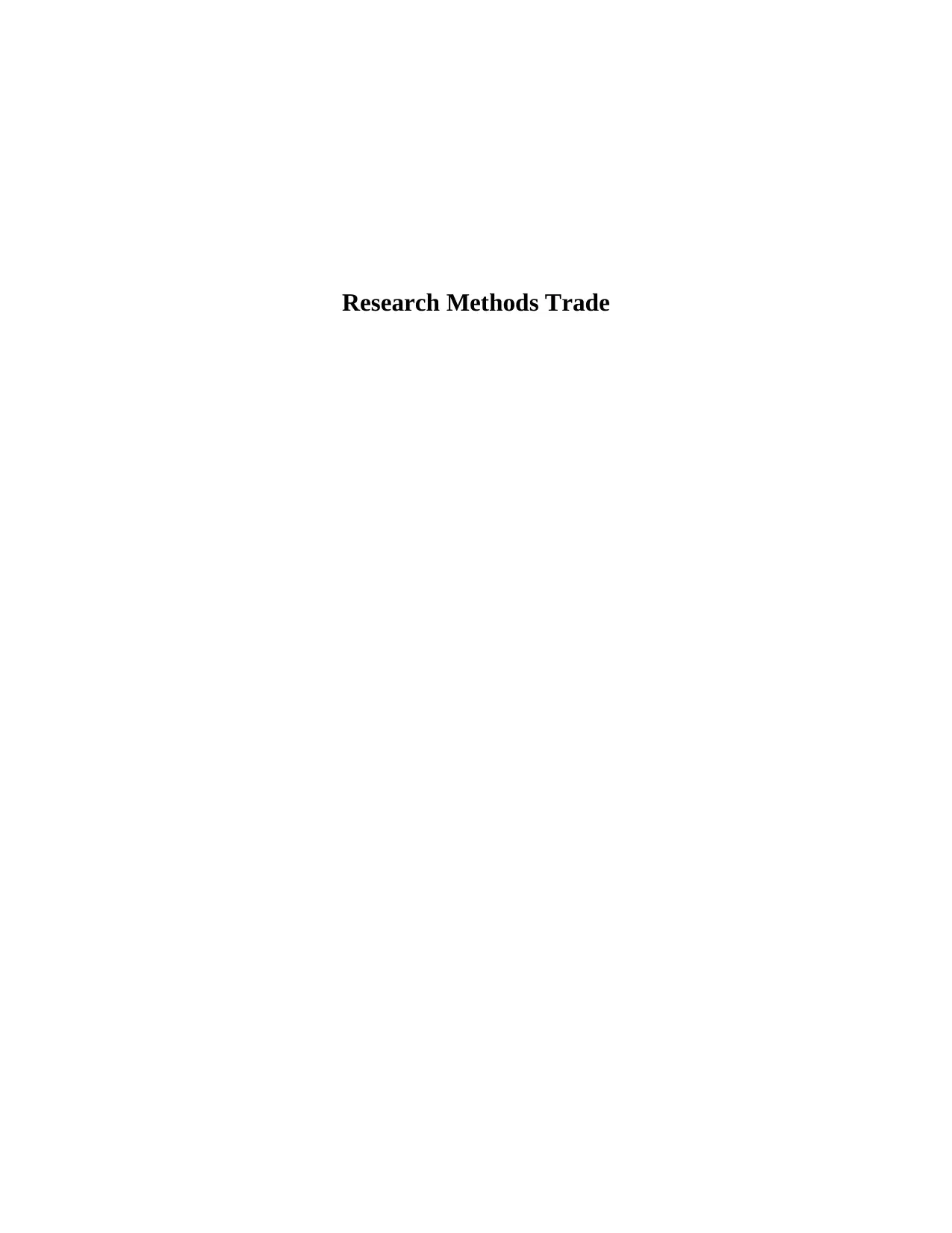
Research Methods Trade
Paraphrase This Document
Need a fresh take? Get an instant paraphrase of this document with our AI Paraphraser
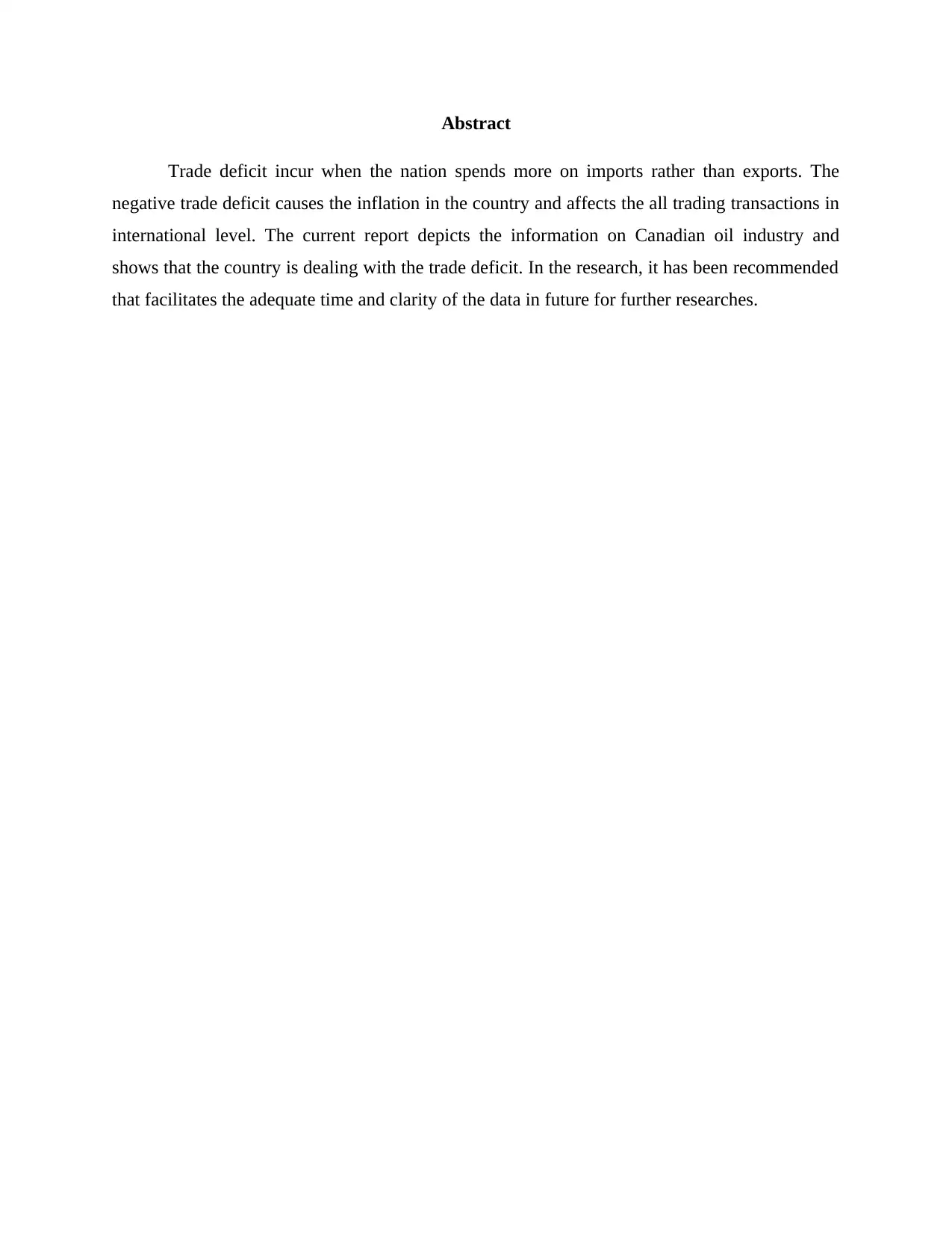
Abstract
Trade deficit incur when the nation spends more on imports rather than exports. The
negative trade deficit causes the inflation in the country and affects the all trading transactions in
international level. The current report depicts the information on Canadian oil industry and
shows that the country is dealing with the trade deficit. In the research, it has been recommended
that facilitates the adequate time and clarity of the data in future for further researches.
Trade deficit incur when the nation spends more on imports rather than exports. The
negative trade deficit causes the inflation in the country and affects the all trading transactions in
international level. The current report depicts the information on Canadian oil industry and
shows that the country is dealing with the trade deficit. In the research, it has been recommended
that facilitates the adequate time and clarity of the data in future for further researches.
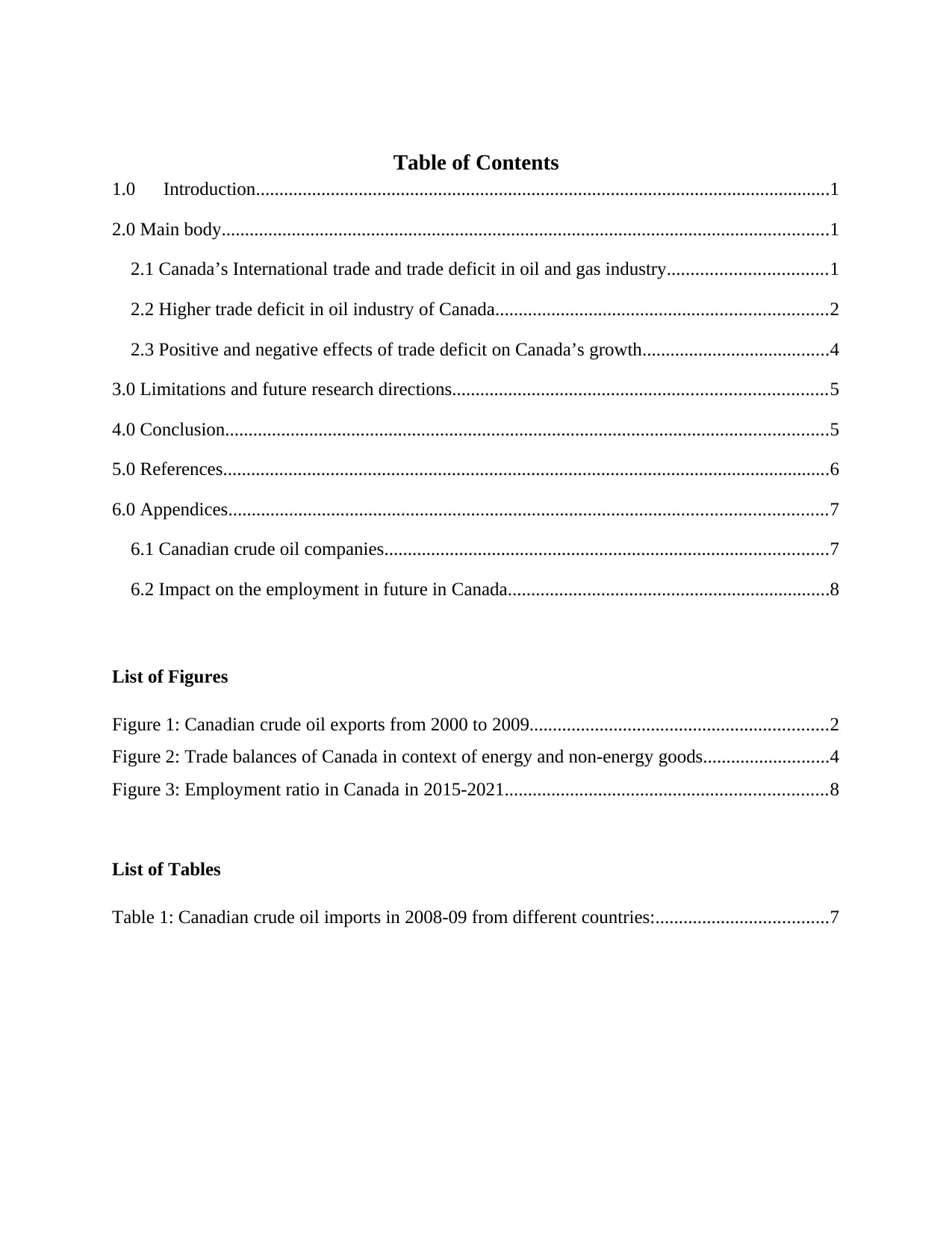
Table of Contents
1.0 Introduction...........................................................................................................................1
2.0 Main body..................................................................................................................................1
2.1 Canada’s International trade and trade deficit in oil and gas industry..................................1
2.2 Higher trade deficit in oil industry of Canada.......................................................................2
2.3 Positive and negative effects of trade deficit on Canada’s growth........................................4
3.0 Limitations and future research directions................................................................................5
4.0 Conclusion.................................................................................................................................5
5.0 References..................................................................................................................................6
6.0 Appendices................................................................................................................................7
6.1 Canadian crude oil companies...............................................................................................7
6.2 Impact on the employment in future in Canada.....................................................................8
List of Figures
Figure 1: Canadian crude oil exports from 2000 to 2009................................................................2
Figure 2: Trade balances of Canada in context of energy and non-energy goods...........................4
Figure 3: Employment ratio in Canada in 2015-2021.....................................................................8
List of Tables
Table 1: Canadian crude oil imports in 2008-09 from different countries:.....................................7
1.0 Introduction...........................................................................................................................1
2.0 Main body..................................................................................................................................1
2.1 Canada’s International trade and trade deficit in oil and gas industry..................................1
2.2 Higher trade deficit in oil industry of Canada.......................................................................2
2.3 Positive and negative effects of trade deficit on Canada’s growth........................................4
3.0 Limitations and future research directions................................................................................5
4.0 Conclusion.................................................................................................................................5
5.0 References..................................................................................................................................6
6.0 Appendices................................................................................................................................7
6.1 Canadian crude oil companies...............................................................................................7
6.2 Impact on the employment in future in Canada.....................................................................8
List of Figures
Figure 1: Canadian crude oil exports from 2000 to 2009................................................................2
Figure 2: Trade balances of Canada in context of energy and non-energy goods...........................4
Figure 3: Employment ratio in Canada in 2015-2021.....................................................................8
List of Tables
Table 1: Canadian crude oil imports in 2008-09 from different countries:.....................................7
⊘ This is a preview!⊘
Do you want full access?
Subscribe today to unlock all pages.

Trusted by 1+ million students worldwide
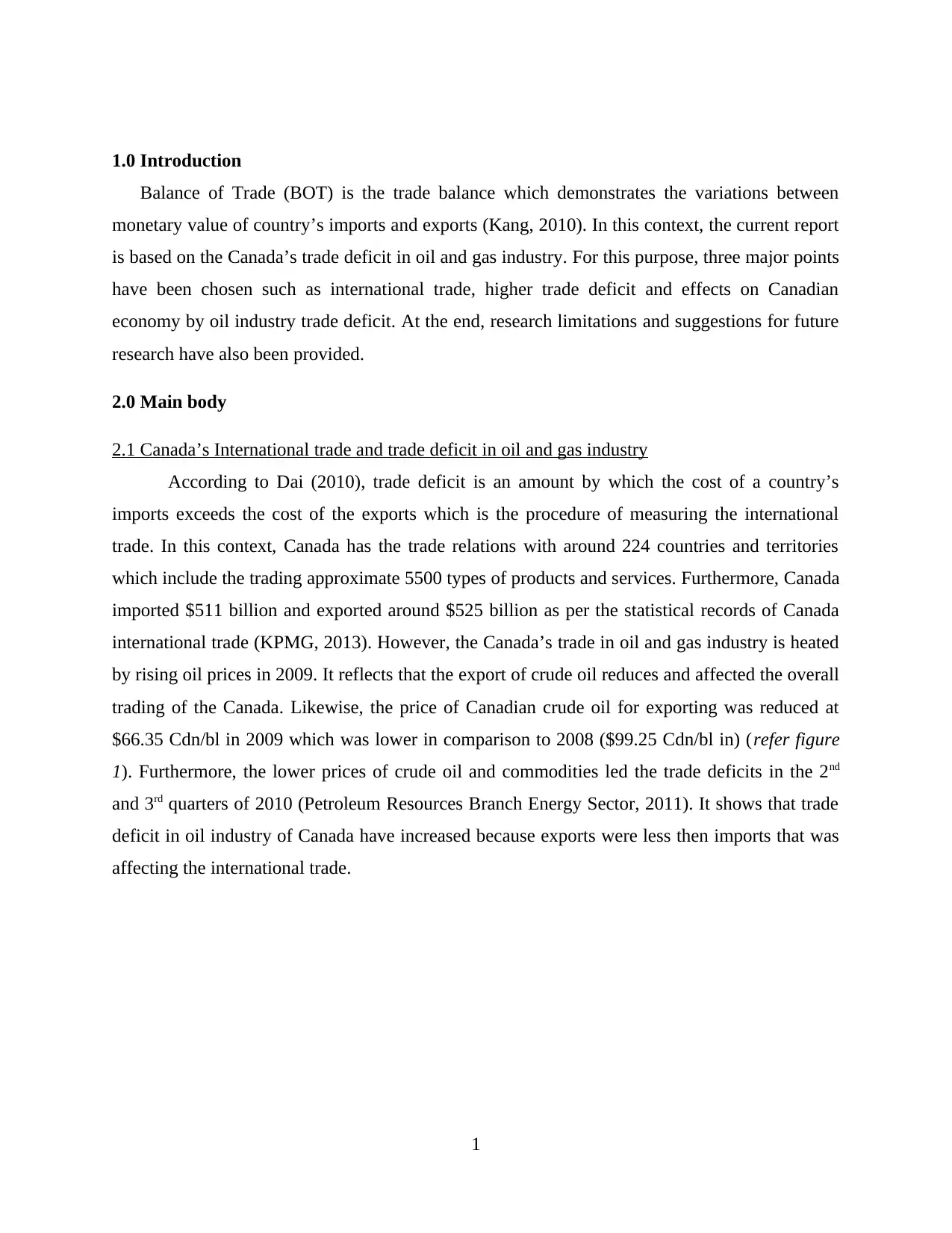
1.0 Introduction
Balance of Trade (BOT) is the trade balance which demonstrates the variations between
monetary value of country’s imports and exports (Kang, 2010). In this context, the current report
is based on the Canada’s trade deficit in oil and gas industry. For this purpose, three major points
have been chosen such as international trade, higher trade deficit and effects on Canadian
economy by oil industry trade deficit. At the end, research limitations and suggestions for future
research have also been provided.
2.0 Main body
2.1 Canada’s International trade and trade deficit in oil and gas industry
According to Dai (2010), trade deficit is an amount by which the cost of a country’s
imports exceeds the cost of the exports which is the procedure of measuring the international
trade. In this context, Canada has the trade relations with around 224 countries and territories
which include the trading approximate 5500 types of products and services. Furthermore, Canada
imported $511 billion and exported around $525 billion as per the statistical records of Canada
international trade (KPMG, 2013). However, the Canada’s trade in oil and gas industry is heated
by rising oil prices in 2009. It reflects that the export of crude oil reduces and affected the overall
trading of the Canada. Likewise, the price of Canadian crude oil for exporting was reduced at
$66.35 Cdn/bl in 2009 which was lower in comparison to 2008 ($99.25 Cdn/bl in) (refer figure
1). Furthermore, the lower prices of crude oil and commodities led the trade deficits in the 2nd
and 3rd quarters of 2010 (Petroleum Resources Branch Energy Sector, 2011). It shows that trade
deficit in oil industry of Canada have increased because exports were less then imports that was
affecting the international trade.
1
Balance of Trade (BOT) is the trade balance which demonstrates the variations between
monetary value of country’s imports and exports (Kang, 2010). In this context, the current report
is based on the Canada’s trade deficit in oil and gas industry. For this purpose, three major points
have been chosen such as international trade, higher trade deficit and effects on Canadian
economy by oil industry trade deficit. At the end, research limitations and suggestions for future
research have also been provided.
2.0 Main body
2.1 Canada’s International trade and trade deficit in oil and gas industry
According to Dai (2010), trade deficit is an amount by which the cost of a country’s
imports exceeds the cost of the exports which is the procedure of measuring the international
trade. In this context, Canada has the trade relations with around 224 countries and territories
which include the trading approximate 5500 types of products and services. Furthermore, Canada
imported $511 billion and exported around $525 billion as per the statistical records of Canada
international trade (KPMG, 2013). However, the Canada’s trade in oil and gas industry is heated
by rising oil prices in 2009. It reflects that the export of crude oil reduces and affected the overall
trading of the Canada. Likewise, the price of Canadian crude oil for exporting was reduced at
$66.35 Cdn/bl in 2009 which was lower in comparison to 2008 ($99.25 Cdn/bl in) (refer figure
1). Furthermore, the lower prices of crude oil and commodities led the trade deficits in the 2nd
and 3rd quarters of 2010 (Petroleum Resources Branch Energy Sector, 2011). It shows that trade
deficit in oil industry of Canada have increased because exports were less then imports that was
affecting the international trade.
1
Paraphrase This Document
Need a fresh take? Get an instant paraphrase of this document with our AI Paraphraser
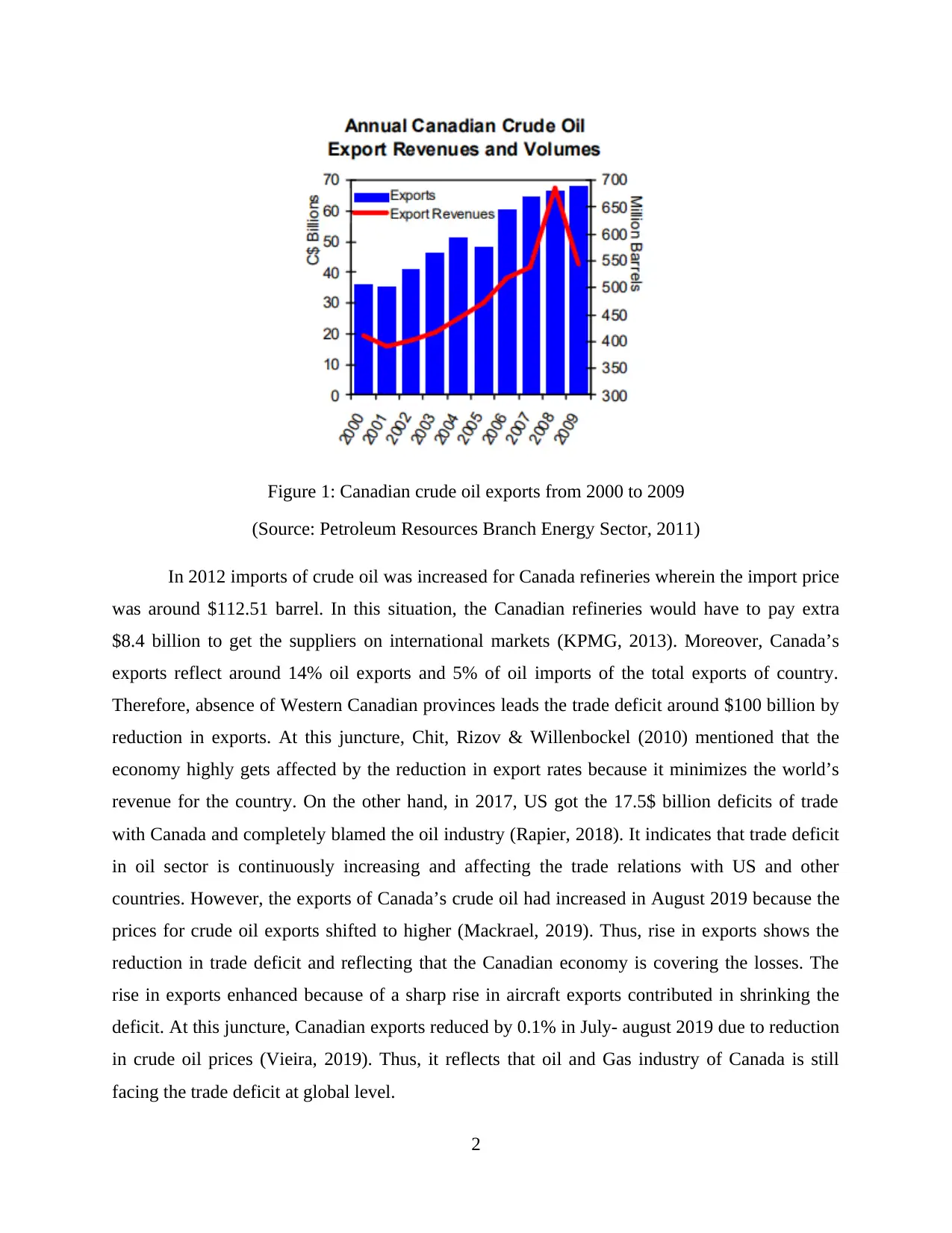
Figure 1: Canadian crude oil exports from 2000 to 2009
(Source: Petroleum Resources Branch Energy Sector, 2011)
In 2012 imports of crude oil was increased for Canada refineries wherein the import price
was around $112.51 barrel. In this situation, the Canadian refineries would have to pay extra
$8.4 billion to get the suppliers on international markets (KPMG, 2013). Moreover, Canada’s
exports reflect around 14% oil exports and 5% of oil imports of the total exports of country.
Therefore, absence of Western Canadian provinces leads the trade deficit around $100 billion by
reduction in exports. At this juncture, Chit, Rizov & Willenbockel (2010) mentioned that the
economy highly gets affected by the reduction in export rates because it minimizes the world’s
revenue for the country. On the other hand, in 2017, US got the 17.5$ billion deficits of trade
with Canada and completely blamed the oil industry (Rapier, 2018). It indicates that trade deficit
in oil sector is continuously increasing and affecting the trade relations with US and other
countries. However, the exports of Canada’s crude oil had increased in August 2019 because the
prices for crude oil exports shifted to higher (Mackrael, 2019). Thus, rise in exports shows the
reduction in trade deficit and reflecting that the Canadian economy is covering the losses. The
rise in exports enhanced because of a sharp rise in aircraft exports contributed in shrinking the
deficit. At this juncture, Canadian exports reduced by 0.1% in July- august 2019 due to reduction
in crude oil prices (Vieira, 2019). Thus, it reflects that oil and Gas industry of Canada is still
facing the trade deficit at global level.
2
(Source: Petroleum Resources Branch Energy Sector, 2011)
In 2012 imports of crude oil was increased for Canada refineries wherein the import price
was around $112.51 barrel. In this situation, the Canadian refineries would have to pay extra
$8.4 billion to get the suppliers on international markets (KPMG, 2013). Moreover, Canada’s
exports reflect around 14% oil exports and 5% of oil imports of the total exports of country.
Therefore, absence of Western Canadian provinces leads the trade deficit around $100 billion by
reduction in exports. At this juncture, Chit, Rizov & Willenbockel (2010) mentioned that the
economy highly gets affected by the reduction in export rates because it minimizes the world’s
revenue for the country. On the other hand, in 2017, US got the 17.5$ billion deficits of trade
with Canada and completely blamed the oil industry (Rapier, 2018). It indicates that trade deficit
in oil sector is continuously increasing and affecting the trade relations with US and other
countries. However, the exports of Canada’s crude oil had increased in August 2019 because the
prices for crude oil exports shifted to higher (Mackrael, 2019). Thus, rise in exports shows the
reduction in trade deficit and reflecting that the Canadian economy is covering the losses. The
rise in exports enhanced because of a sharp rise in aircraft exports contributed in shrinking the
deficit. At this juncture, Canadian exports reduced by 0.1% in July- august 2019 due to reduction
in crude oil prices (Vieira, 2019). Thus, it reflects that oil and Gas industry of Canada is still
facing the trade deficit at global level.
2
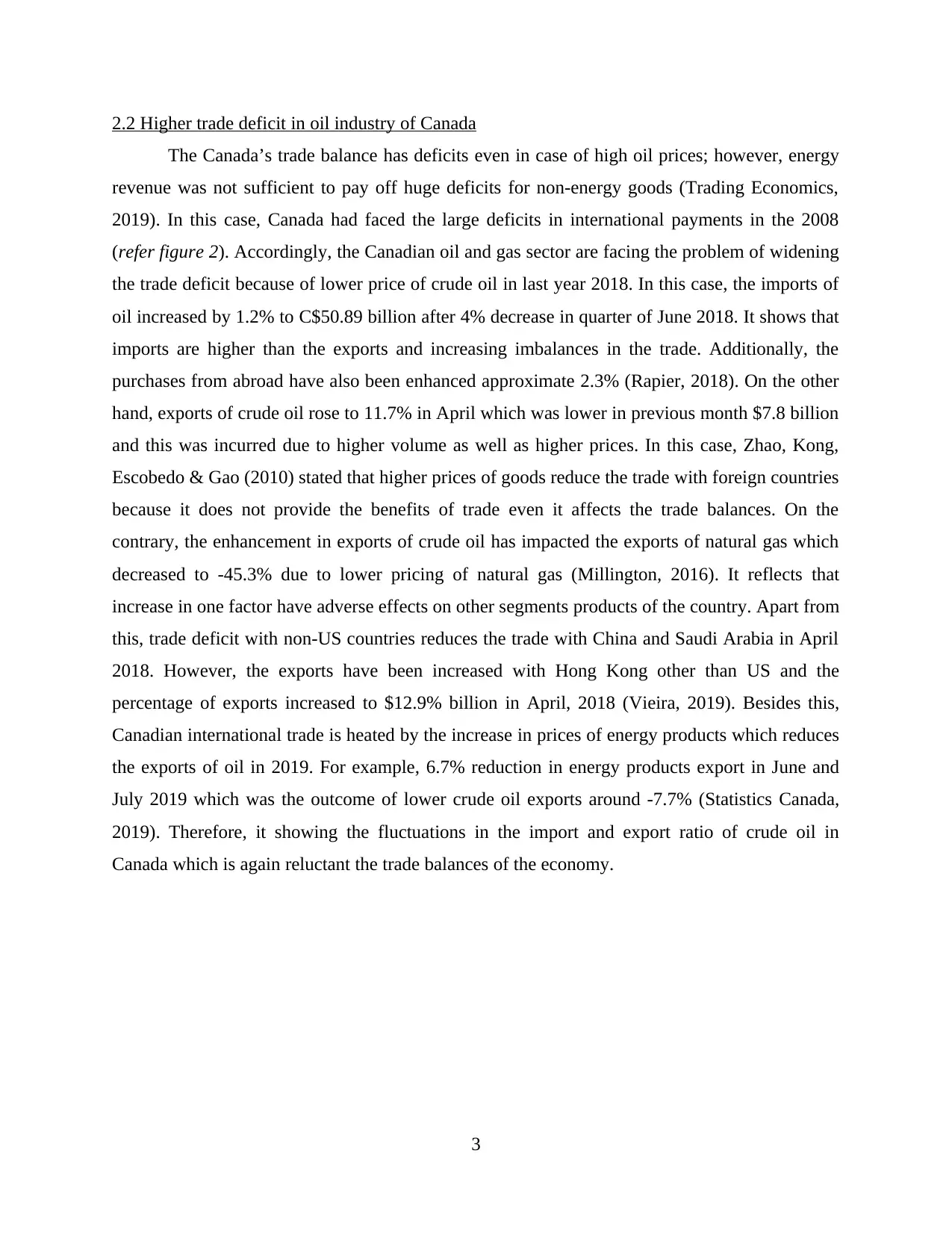
2.2 Higher trade deficit in oil industry of Canada
The Canada’s trade balance has deficits even in case of high oil prices; however, energy
revenue was not sufficient to pay off huge deficits for non-energy goods (Trading Economics,
2019). In this case, Canada had faced the large deficits in international payments in the 2008
(refer figure 2). Accordingly, the Canadian oil and gas sector are facing the problem of widening
the trade deficit because of lower price of crude oil in last year 2018. In this case, the imports of
oil increased by 1.2% to C$50.89 billion after 4% decrease in quarter of June 2018. It shows that
imports are higher than the exports and increasing imbalances in the trade. Additionally, the
purchases from abroad have also been enhanced approximate 2.3% (Rapier, 2018). On the other
hand, exports of crude oil rose to 11.7% in April which was lower in previous month $7.8 billion
and this was incurred due to higher volume as well as higher prices. In this case, Zhao, Kong,
Escobedo & Gao (2010) stated that higher prices of goods reduce the trade with foreign countries
because it does not provide the benefits of trade even it affects the trade balances. On the
contrary, the enhancement in exports of crude oil has impacted the exports of natural gas which
decreased to -45.3% due to lower pricing of natural gas (Millington, 2016). It reflects that
increase in one factor have adverse effects on other segments products of the country. Apart from
this, trade deficit with non-US countries reduces the trade with China and Saudi Arabia in April
2018. However, the exports have been increased with Hong Kong other than US and the
percentage of exports increased to $12.9% billion in April, 2018 (Vieira, 2019). Besides this,
Canadian international trade is heated by the increase in prices of energy products which reduces
the exports of oil in 2019. For example, 6.7% reduction in energy products export in June and
July 2019 which was the outcome of lower crude oil exports around -7.7% (Statistics Canada,
2019). Therefore, it showing the fluctuations in the import and export ratio of crude oil in
Canada which is again reluctant the trade balances of the economy.
3
The Canada’s trade balance has deficits even in case of high oil prices; however, energy
revenue was not sufficient to pay off huge deficits for non-energy goods (Trading Economics,
2019). In this case, Canada had faced the large deficits in international payments in the 2008
(refer figure 2). Accordingly, the Canadian oil and gas sector are facing the problem of widening
the trade deficit because of lower price of crude oil in last year 2018. In this case, the imports of
oil increased by 1.2% to C$50.89 billion after 4% decrease in quarter of June 2018. It shows that
imports are higher than the exports and increasing imbalances in the trade. Additionally, the
purchases from abroad have also been enhanced approximate 2.3% (Rapier, 2018). On the other
hand, exports of crude oil rose to 11.7% in April which was lower in previous month $7.8 billion
and this was incurred due to higher volume as well as higher prices. In this case, Zhao, Kong,
Escobedo & Gao (2010) stated that higher prices of goods reduce the trade with foreign countries
because it does not provide the benefits of trade even it affects the trade balances. On the
contrary, the enhancement in exports of crude oil has impacted the exports of natural gas which
decreased to -45.3% due to lower pricing of natural gas (Millington, 2016). It reflects that
increase in one factor have adverse effects on other segments products of the country. Apart from
this, trade deficit with non-US countries reduces the trade with China and Saudi Arabia in April
2018. However, the exports have been increased with Hong Kong other than US and the
percentage of exports increased to $12.9% billion in April, 2018 (Vieira, 2019). Besides this,
Canadian international trade is heated by the increase in prices of energy products which reduces
the exports of oil in 2019. For example, 6.7% reduction in energy products export in June and
July 2019 which was the outcome of lower crude oil exports around -7.7% (Statistics Canada,
2019). Therefore, it showing the fluctuations in the import and export ratio of crude oil in
Canada which is again reluctant the trade balances of the economy.
3
⊘ This is a preview!⊘
Do you want full access?
Subscribe today to unlock all pages.

Trusted by 1+ million students worldwide
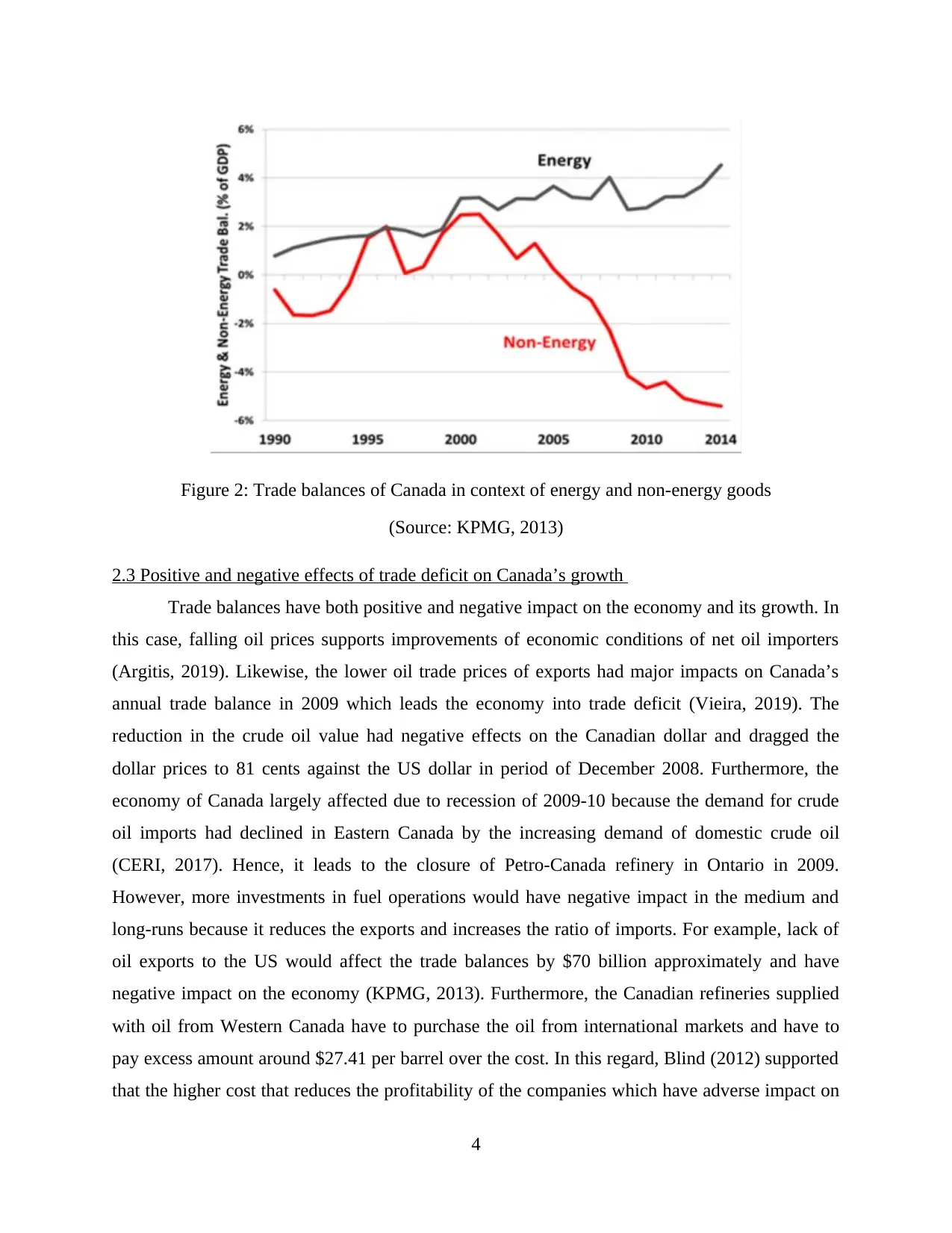
Figure 2: Trade balances of Canada in context of energy and non-energy goods
(Source: KPMG, 2013)
2.3 Positive and negative effects of trade deficit on Canada’s growth
Trade balances have both positive and negative impact on the economy and its growth. In
this case, falling oil prices supports improvements of economic conditions of net oil importers
(Argitis, 2019). Likewise, the lower oil trade prices of exports had major impacts on Canada’s
annual trade balance in 2009 which leads the economy into trade deficit (Vieira, 2019). The
reduction in the crude oil value had negative effects on the Canadian dollar and dragged the
dollar prices to 81 cents against the US dollar in period of December 2008. Furthermore, the
economy of Canada largely affected due to recession of 2009-10 because the demand for crude
oil imports had declined in Eastern Canada by the increasing demand of domestic crude oil
(CERI, 2017). Hence, it leads to the closure of Petro-Canada refinery in Ontario in 2009.
However, more investments in fuel operations would have negative impact in the medium and
long-runs because it reduces the exports and increases the ratio of imports. For example, lack of
oil exports to the US would affect the trade balances by $70 billion approximately and have
negative impact on the economy (KPMG, 2013). Furthermore, the Canadian refineries supplied
with oil from Western Canada have to purchase the oil from international markets and have to
pay excess amount around $27.41 per barrel over the cost. In this regard, Blind (2012) supported
that the higher cost that reduces the profitability of the companies which have adverse impact on
4
(Source: KPMG, 2013)
2.3 Positive and negative effects of trade deficit on Canada’s growth
Trade balances have both positive and negative impact on the economy and its growth. In
this case, falling oil prices supports improvements of economic conditions of net oil importers
(Argitis, 2019). Likewise, the lower oil trade prices of exports had major impacts on Canada’s
annual trade balance in 2009 which leads the economy into trade deficit (Vieira, 2019). The
reduction in the crude oil value had negative effects on the Canadian dollar and dragged the
dollar prices to 81 cents against the US dollar in period of December 2008. Furthermore, the
economy of Canada largely affected due to recession of 2009-10 because the demand for crude
oil imports had declined in Eastern Canada by the increasing demand of domestic crude oil
(CERI, 2017). Hence, it leads to the closure of Petro-Canada refinery in Ontario in 2009.
However, more investments in fuel operations would have negative impact in the medium and
long-runs because it reduces the exports and increases the ratio of imports. For example, lack of
oil exports to the US would affect the trade balances by $70 billion approximately and have
negative impact on the economy (KPMG, 2013). Furthermore, the Canadian refineries supplied
with oil from Western Canada have to purchase the oil from international markets and have to
pay excess amount around $27.41 per barrel over the cost. In this regard, Blind (2012) supported
that the higher cost that reduces the profitability of the companies which have adverse impact on
4
Paraphrase This Document
Need a fresh take? Get an instant paraphrase of this document with our AI Paraphraser
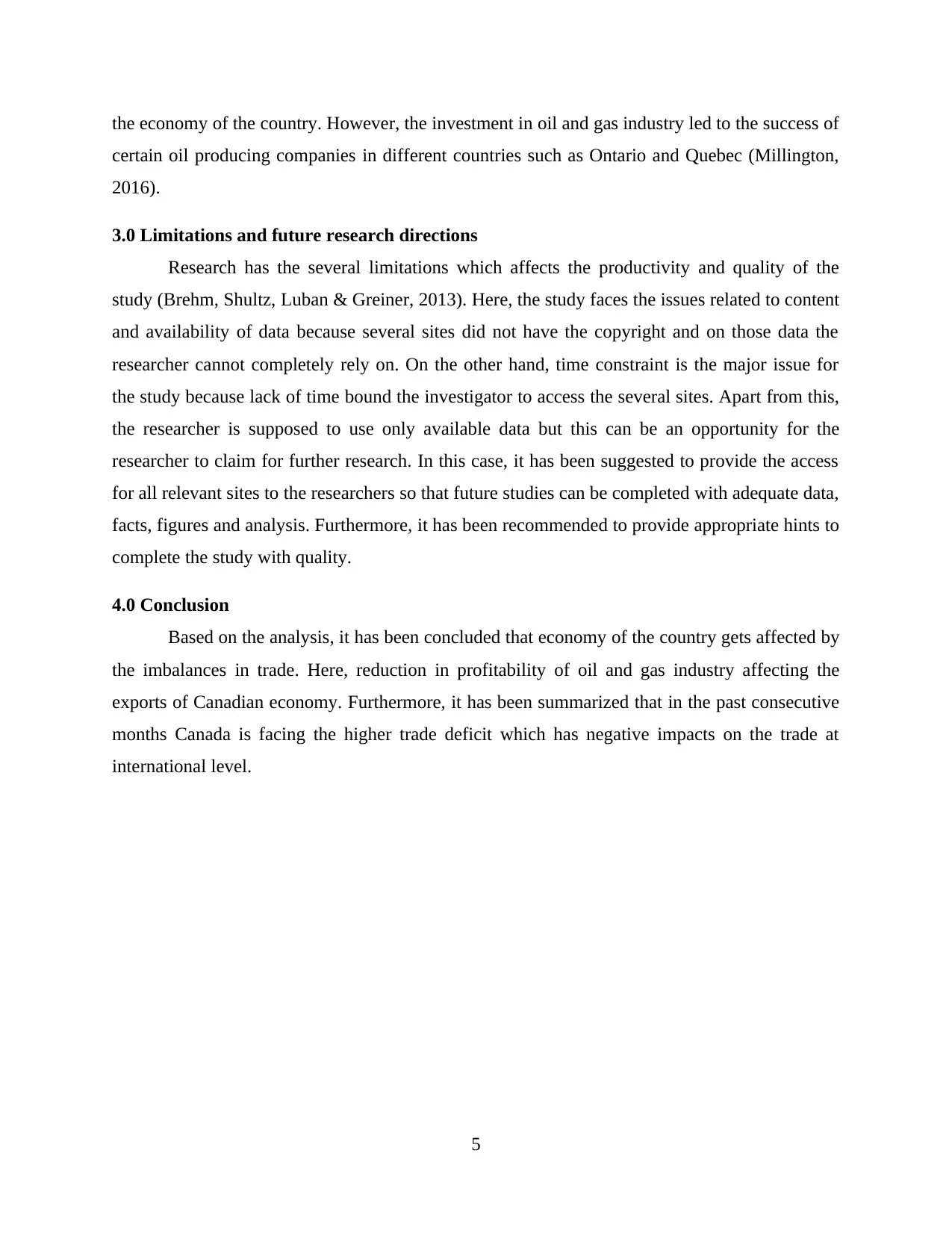
the economy of the country. However, the investment in oil and gas industry led to the success of
certain oil producing companies in different countries such as Ontario and Quebec (Millington,
2016).
3.0 Limitations and future research directions
Research has the several limitations which affects the productivity and quality of the
study (Brehm, Shultz, Luban & Greiner, 2013). Here, the study faces the issues related to content
and availability of data because several sites did not have the copyright and on those data the
researcher cannot completely rely on. On the other hand, time constraint is the major issue for
the study because lack of time bound the investigator to access the several sites. Apart from this,
the researcher is supposed to use only available data but this can be an opportunity for the
researcher to claim for further research. In this case, it has been suggested to provide the access
for all relevant sites to the researchers so that future studies can be completed with adequate data,
facts, figures and analysis. Furthermore, it has been recommended to provide appropriate hints to
complete the study with quality.
4.0 Conclusion
Based on the analysis, it has been concluded that economy of the country gets affected by
the imbalances in trade. Here, reduction in profitability of oil and gas industry affecting the
exports of Canadian economy. Furthermore, it has been summarized that in the past consecutive
months Canada is facing the higher trade deficit which has negative impacts on the trade at
international level.
5
certain oil producing companies in different countries such as Ontario and Quebec (Millington,
2016).
3.0 Limitations and future research directions
Research has the several limitations which affects the productivity and quality of the
study (Brehm, Shultz, Luban & Greiner, 2013). Here, the study faces the issues related to content
and availability of data because several sites did not have the copyright and on those data the
researcher cannot completely rely on. On the other hand, time constraint is the major issue for
the study because lack of time bound the investigator to access the several sites. Apart from this,
the researcher is supposed to use only available data but this can be an opportunity for the
researcher to claim for further research. In this case, it has been suggested to provide the access
for all relevant sites to the researchers so that future studies can be completed with adequate data,
facts, figures and analysis. Furthermore, it has been recommended to provide appropriate hints to
complete the study with quality.
4.0 Conclusion
Based on the analysis, it has been concluded that economy of the country gets affected by
the imbalances in trade. Here, reduction in profitability of oil and gas industry affecting the
exports of Canadian economy. Furthermore, it has been summarized that in the past consecutive
months Canada is facing the higher trade deficit which has negative impacts on the trade at
international level.
5
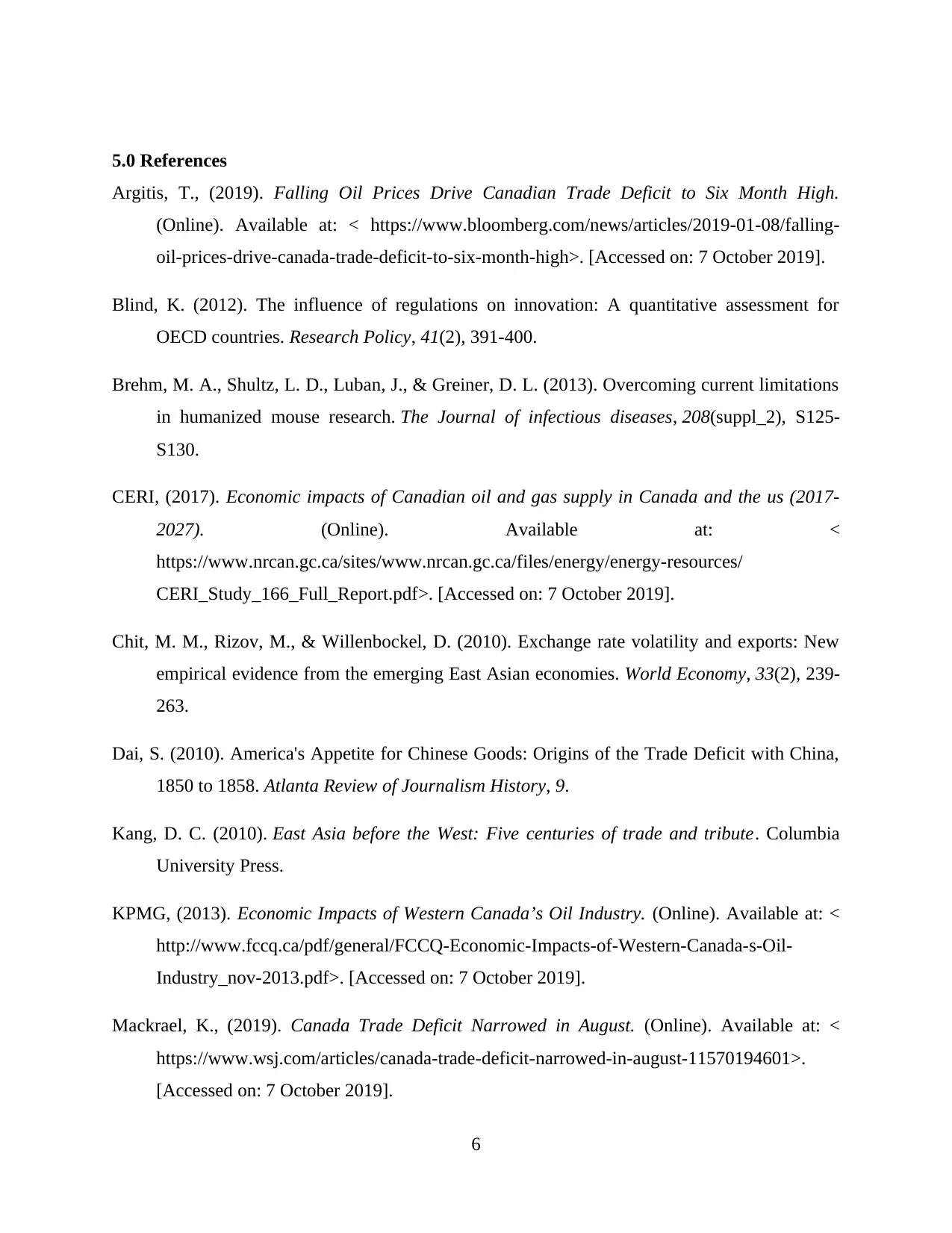
5.0 References
Argitis, T., (2019). Falling Oil Prices Drive Canadian Trade Deficit to Six Month High.
(Online). Available at: < https://www.bloomberg.com/news/articles/2019-01-08/falling-
oil-prices-drive-canada-trade-deficit-to-six-month-high>. [Accessed on: 7 October 2019].
Blind, K. (2012). The influence of regulations on innovation: A quantitative assessment for
OECD countries. Research Policy, 41(2), 391-400.
Brehm, M. A., Shultz, L. D., Luban, J., & Greiner, D. L. (2013). Overcoming current limitations
in humanized mouse research. The Journal of infectious diseases, 208(suppl_2), S125-
S130.
CERI, (2017). Economic impacts of Canadian oil and gas supply in Canada and the us (2017-
2027). (Online). Available at: <
https://www.nrcan.gc.ca/sites/www.nrcan.gc.ca/files/energy/energy-resources/
CERI_Study_166_Full_Report.pdf>. [Accessed on: 7 October 2019].
Chit, M. M., Rizov, M., & Willenbockel, D. (2010). Exchange rate volatility and exports: New
empirical evidence from the emerging East Asian economies. World Economy, 33(2), 239-
263.
Dai, S. (2010). America's Appetite for Chinese Goods: Origins of the Trade Deficit with China,
1850 to 1858. Atlanta Review of Journalism History, 9.
Kang, D. C. (2010). East Asia before the West: Five centuries of trade and tribute. Columbia
University Press.
KPMG, (2013). Economic Impacts of Western Canada’s Oil Industry. (Online). Available at: <
http://www.fccq.ca/pdf/general/FCCQ-Economic-Impacts-of-Western-Canada-s-Oil-
Industry_nov-2013.pdf>. [Accessed on: 7 October 2019].
Mackrael, K., (2019). Canada Trade Deficit Narrowed in August. (Online). Available at: <
https://www.wsj.com/articles/canada-trade-deficit-narrowed-in-august-11570194601>.
[Accessed on: 7 October 2019].
6
Argitis, T., (2019). Falling Oil Prices Drive Canadian Trade Deficit to Six Month High.
(Online). Available at: < https://www.bloomberg.com/news/articles/2019-01-08/falling-
oil-prices-drive-canada-trade-deficit-to-six-month-high>. [Accessed on: 7 October 2019].
Blind, K. (2012). The influence of regulations on innovation: A quantitative assessment for
OECD countries. Research Policy, 41(2), 391-400.
Brehm, M. A., Shultz, L. D., Luban, J., & Greiner, D. L. (2013). Overcoming current limitations
in humanized mouse research. The Journal of infectious diseases, 208(suppl_2), S125-
S130.
CERI, (2017). Economic impacts of Canadian oil and gas supply in Canada and the us (2017-
2027). (Online). Available at: <
https://www.nrcan.gc.ca/sites/www.nrcan.gc.ca/files/energy/energy-resources/
CERI_Study_166_Full_Report.pdf>. [Accessed on: 7 October 2019].
Chit, M. M., Rizov, M., & Willenbockel, D. (2010). Exchange rate volatility and exports: New
empirical evidence from the emerging East Asian economies. World Economy, 33(2), 239-
263.
Dai, S. (2010). America's Appetite for Chinese Goods: Origins of the Trade Deficit with China,
1850 to 1858. Atlanta Review of Journalism History, 9.
Kang, D. C. (2010). East Asia before the West: Five centuries of trade and tribute. Columbia
University Press.
KPMG, (2013). Economic Impacts of Western Canada’s Oil Industry. (Online). Available at: <
http://www.fccq.ca/pdf/general/FCCQ-Economic-Impacts-of-Western-Canada-s-Oil-
Industry_nov-2013.pdf>. [Accessed on: 7 October 2019].
Mackrael, K., (2019). Canada Trade Deficit Narrowed in August. (Online). Available at: <
https://www.wsj.com/articles/canada-trade-deficit-narrowed-in-august-11570194601>.
[Accessed on: 7 October 2019].
6
⊘ This is a preview!⊘
Do you want full access?
Subscribe today to unlock all pages.

Trusted by 1+ million students worldwide
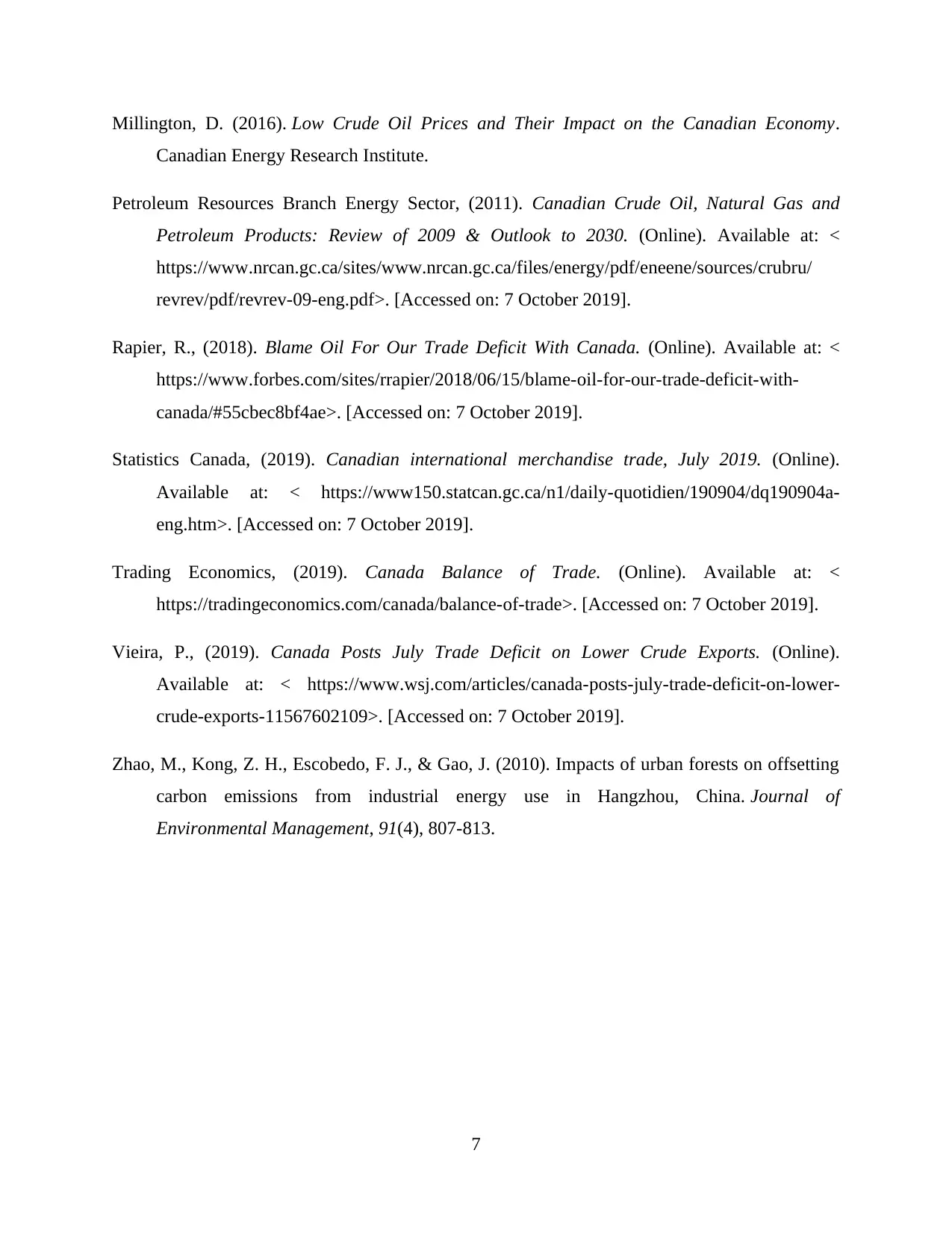
Millington, D. (2016). Low Crude Oil Prices and Their Impact on the Canadian Economy.
Canadian Energy Research Institute.
Petroleum Resources Branch Energy Sector, (2011). Canadian Crude Oil, Natural Gas and
Petroleum Products: Review of 2009 & Outlook to 2030. (Online). Available at: <
https://www.nrcan.gc.ca/sites/www.nrcan.gc.ca/files/energy/pdf/eneene/sources/crubru/
revrev/pdf/revrev-09-eng.pdf>. [Accessed on: 7 October 2019].
Rapier, R., (2018). Blame Oil For Our Trade Deficit With Canada. (Online). Available at: <
https://www.forbes.com/sites/rrapier/2018/06/15/blame-oil-for-our-trade-deficit-with-
canada/#55cbec8bf4ae>. [Accessed on: 7 October 2019].
Statistics Canada, (2019). Canadian international merchandise trade, July 2019. (Online).
Available at: < https://www150.statcan.gc.ca/n1/daily-quotidien/190904/dq190904a-
eng.htm>. [Accessed on: 7 October 2019].
Trading Economics, (2019). Canada Balance of Trade. (Online). Available at: <
https://tradingeconomics.com/canada/balance-of-trade>. [Accessed on: 7 October 2019].
Vieira, P., (2019). Canada Posts July Trade Deficit on Lower Crude Exports. (Online).
Available at: < https://www.wsj.com/articles/canada-posts-july-trade-deficit-on-lower-
crude-exports-11567602109>. [Accessed on: 7 October 2019].
Zhao, M., Kong, Z. H., Escobedo, F. J., & Gao, J. (2010). Impacts of urban forests on offsetting
carbon emissions from industrial energy use in Hangzhou, China. Journal of
Environmental Management, 91(4), 807-813.
7
Canadian Energy Research Institute.
Petroleum Resources Branch Energy Sector, (2011). Canadian Crude Oil, Natural Gas and
Petroleum Products: Review of 2009 & Outlook to 2030. (Online). Available at: <
https://www.nrcan.gc.ca/sites/www.nrcan.gc.ca/files/energy/pdf/eneene/sources/crubru/
revrev/pdf/revrev-09-eng.pdf>. [Accessed on: 7 October 2019].
Rapier, R., (2018). Blame Oil For Our Trade Deficit With Canada. (Online). Available at: <
https://www.forbes.com/sites/rrapier/2018/06/15/blame-oil-for-our-trade-deficit-with-
canada/#55cbec8bf4ae>. [Accessed on: 7 October 2019].
Statistics Canada, (2019). Canadian international merchandise trade, July 2019. (Online).
Available at: < https://www150.statcan.gc.ca/n1/daily-quotidien/190904/dq190904a-
eng.htm>. [Accessed on: 7 October 2019].
Trading Economics, (2019). Canada Balance of Trade. (Online). Available at: <
https://tradingeconomics.com/canada/balance-of-trade>. [Accessed on: 7 October 2019].
Vieira, P., (2019). Canada Posts July Trade Deficit on Lower Crude Exports. (Online).
Available at: < https://www.wsj.com/articles/canada-posts-july-trade-deficit-on-lower-
crude-exports-11567602109>. [Accessed on: 7 October 2019].
Zhao, M., Kong, Z. H., Escobedo, F. J., & Gao, J. (2010). Impacts of urban forests on offsetting
carbon emissions from industrial energy use in Hangzhou, China. Journal of
Environmental Management, 91(4), 807-813.
7
Paraphrase This Document
Need a fresh take? Get an instant paraphrase of this document with our AI Paraphraser
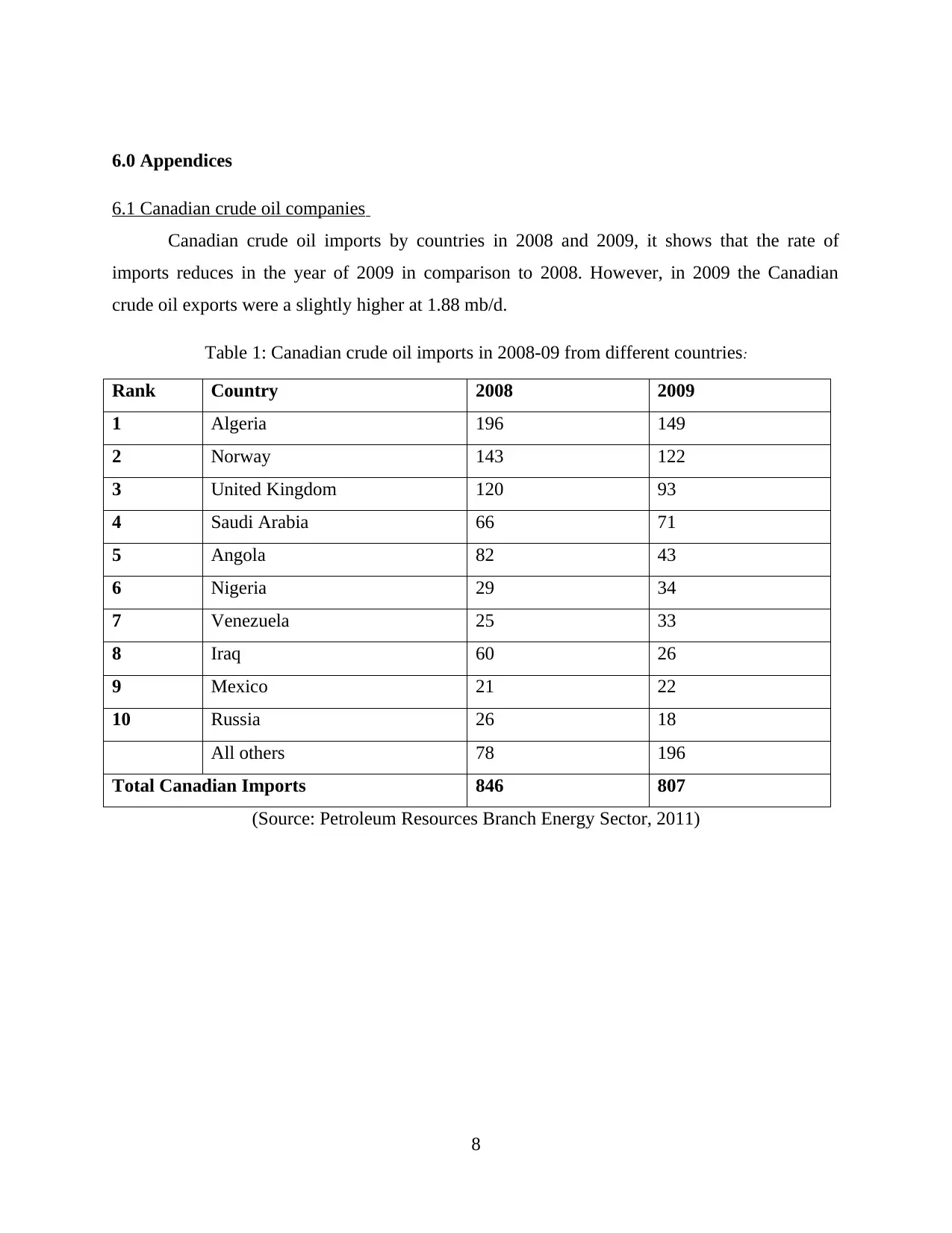
6.0 Appendices
6.1 Canadian crude oil companies
Canadian crude oil imports by countries in 2008 and 2009, it shows that the rate of
imports reduces in the year of 2009 in comparison to 2008. However, in 2009 the Canadian
crude oil exports were a slightly higher at 1.88 mb/d.
Table 1: Canadian crude oil imports in 2008-09 from different countries:
Rank Country 2008 2009
1 Algeria 196 149
2 Norway 143 122
3 United Kingdom 120 93
4 Saudi Arabia 66 71
5 Angola 82 43
6 Nigeria 29 34
7 Venezuela 25 33
8 Iraq 60 26
9 Mexico 21 22
10 Russia 26 18
All others 78 196
Total Canadian Imports 846 807
(Source: Petroleum Resources Branch Energy Sector, 2011)
8
6.1 Canadian crude oil companies
Canadian crude oil imports by countries in 2008 and 2009, it shows that the rate of
imports reduces in the year of 2009 in comparison to 2008. However, in 2009 the Canadian
crude oil exports were a slightly higher at 1.88 mb/d.
Table 1: Canadian crude oil imports in 2008-09 from different countries:
Rank Country 2008 2009
1 Algeria 196 149
2 Norway 143 122
3 United Kingdom 120 93
4 Saudi Arabia 66 71
5 Angola 82 43
6 Nigeria 29 34
7 Venezuela 25 33
8 Iraq 60 26
9 Mexico 21 22
10 Russia 26 18
All others 78 196
Total Canadian Imports 846 807
(Source: Petroleum Resources Branch Energy Sector, 2011)
8
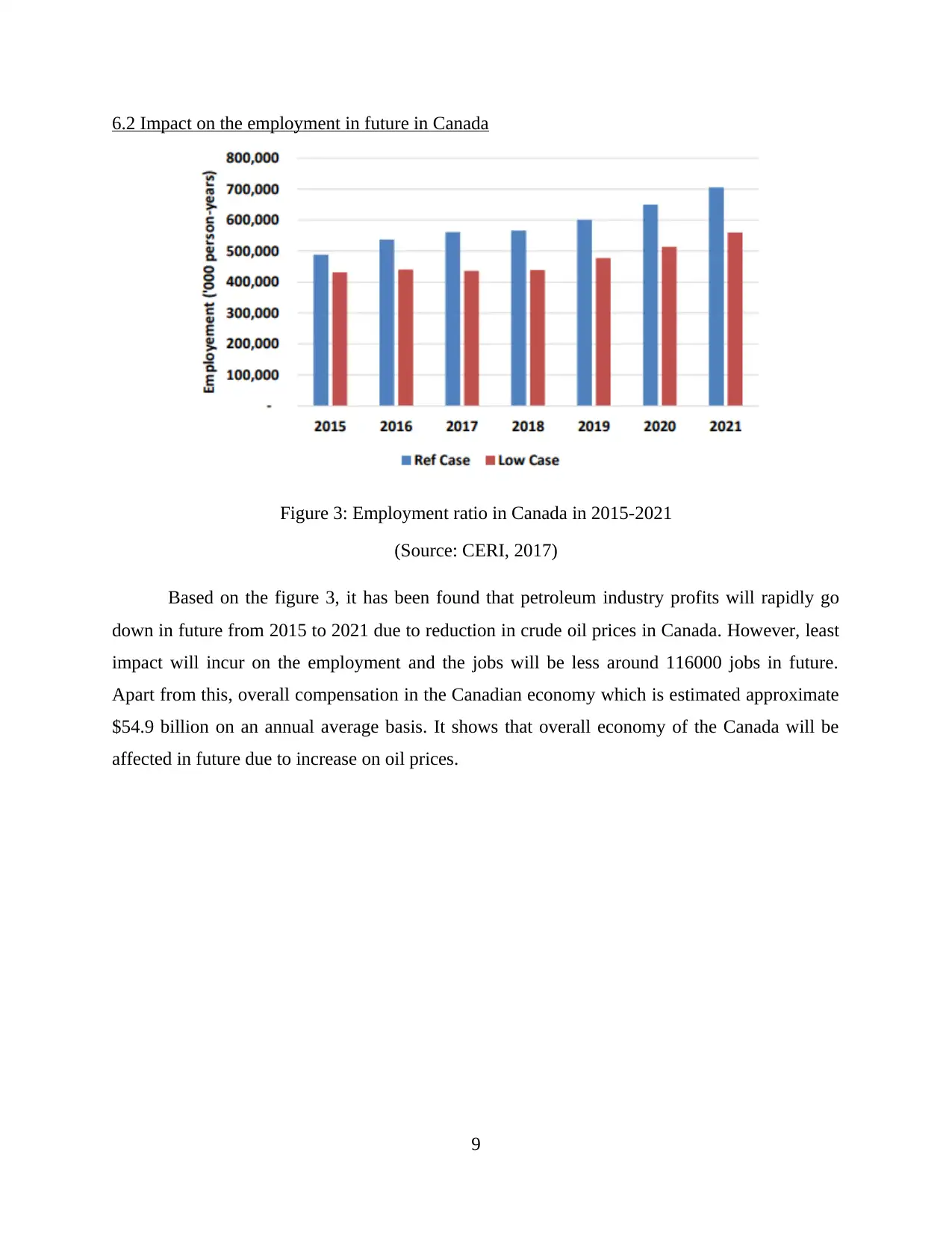
6.2 Impact on the employment in future in Canada
Figure 3: Employment ratio in Canada in 2015-2021
(Source: CERI, 2017)
Based on the figure 3, it has been found that petroleum industry profits will rapidly go
down in future from 2015 to 2021 due to reduction in crude oil prices in Canada. However, least
impact will incur on the employment and the jobs will be less around 116000 jobs in future.
Apart from this, overall compensation in the Canadian economy which is estimated approximate
$54.9 billion on an annual average basis. It shows that overall economy of the Canada will be
affected in future due to increase on oil prices.
9
Figure 3: Employment ratio in Canada in 2015-2021
(Source: CERI, 2017)
Based on the figure 3, it has been found that petroleum industry profits will rapidly go
down in future from 2015 to 2021 due to reduction in crude oil prices in Canada. However, least
impact will incur on the employment and the jobs will be less around 116000 jobs in future.
Apart from this, overall compensation in the Canadian economy which is estimated approximate
$54.9 billion on an annual average basis. It shows that overall economy of the Canada will be
affected in future due to increase on oil prices.
9
⊘ This is a preview!⊘
Do you want full access?
Subscribe today to unlock all pages.

Trusted by 1+ million students worldwide
1 out of 12
Related Documents
Your All-in-One AI-Powered Toolkit for Academic Success.
+13062052269
info@desklib.com
Available 24*7 on WhatsApp / Email
![[object Object]](/_next/static/media/star-bottom.7253800d.svg)
Unlock your academic potential
Copyright © 2020–2025 A2Z Services. All Rights Reserved. Developed and managed by ZUCOL.





